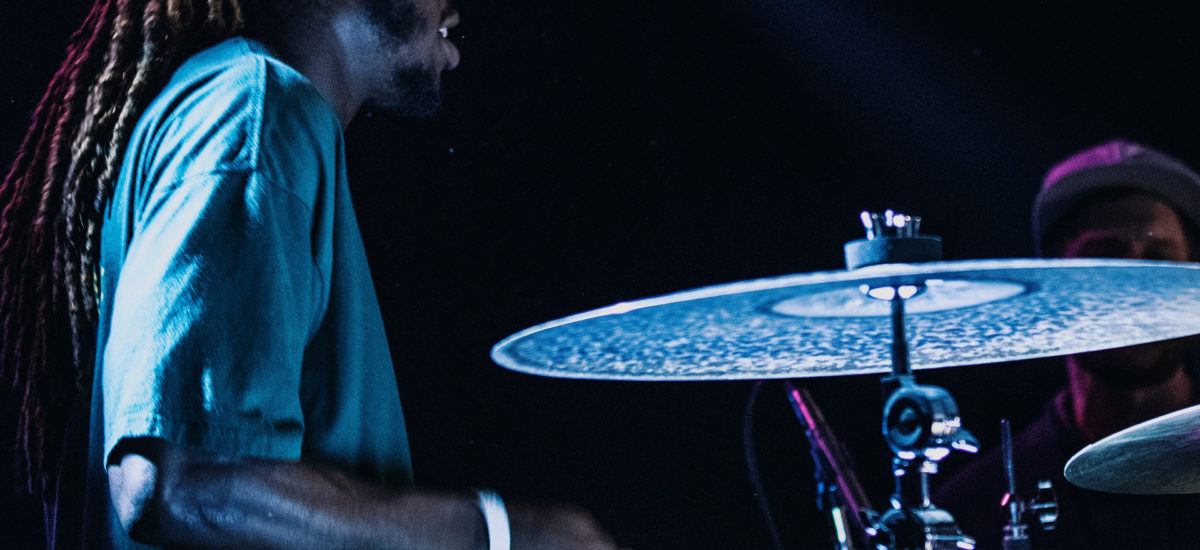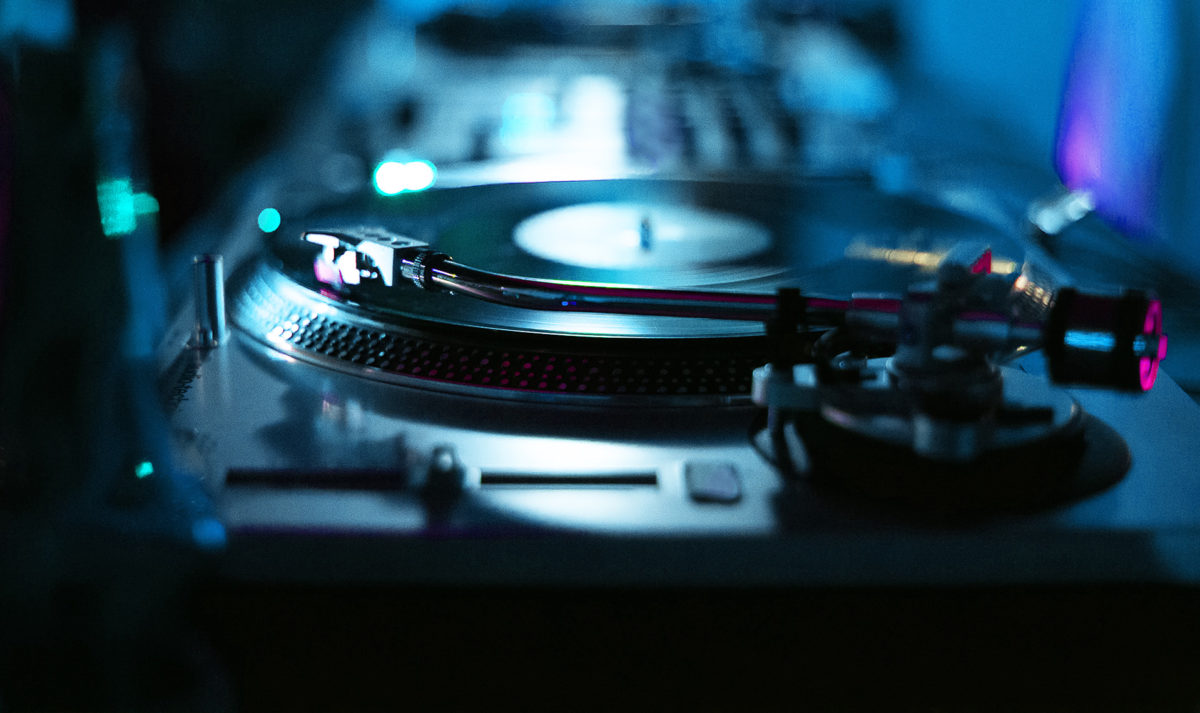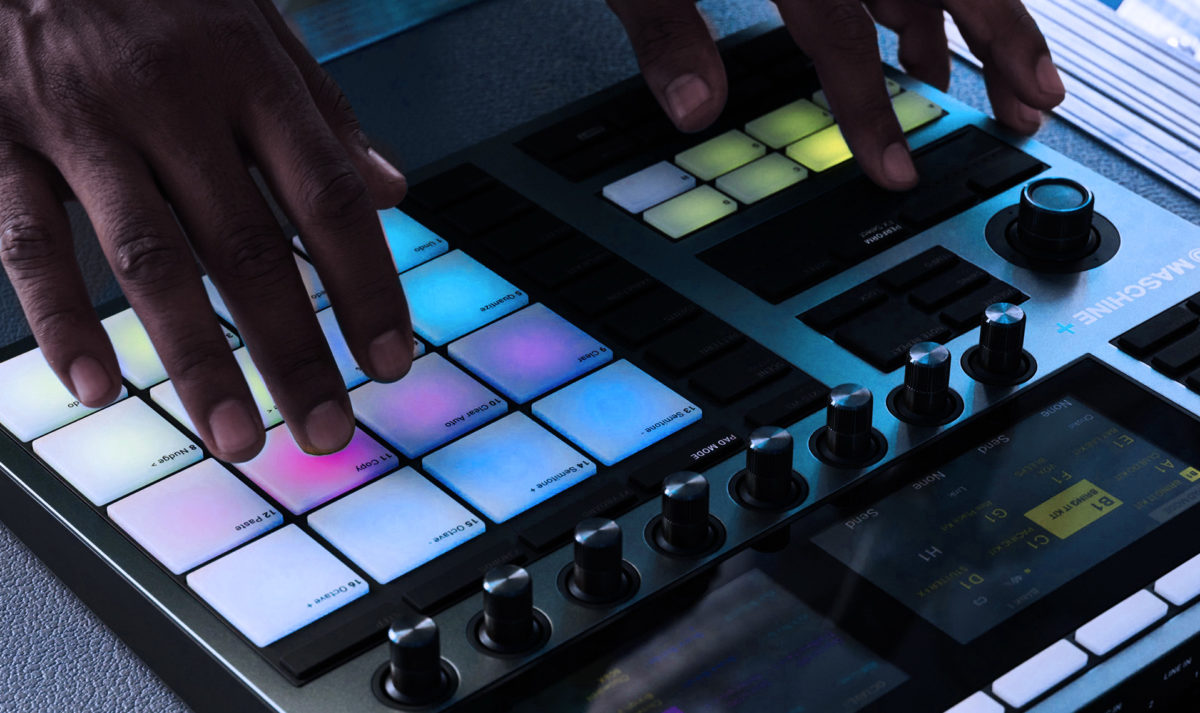
Rapping is generally the main focus of hip-hop music, positioned in the forefront of the mix and the listener’s attention, and producers tend to think of this specifically when making a hip-hop beat. Some of the heaviest tracks require a light touch; not cluttering the mix and leaving ample space for the vocal part to cut through takes a degree of subtlety and control, a keen ear for detail that comes with experience. That said, instrumental hip-hop takes the formula of the functional hip-hop beat from the background and puts it right in center stage, giving artists the freedom to push into more experimental sounds, with greater flexibility to showcase more complex musical twists and turns.
To properly understand the context and give due credit to the importance of hip-hop music and culture, we have to go back to the roots in 1970s New York City. The genre originally emerged out of housing projects in the Bronx that were home to predominantly working class, African American communities. Facing neglect from the state and a lack of opportunity in disadvantaged, often impoverished neighborhoods, hip-hop provided inner-city youths with a platform, a sound of their own with which to voice their own interests and issues, plus the chance for financial gain and upward social mobility.
Built on these foundations, hip-hop established and has retained a progressive, independent culture with a somewhat anti-establishment agenda. The music is often used as a vehicle to express socially conscious and political themes, shining a light on racism, inequality, and police brutality. But the culture was not limited to music; DJs played instrumental hip-hop beats as an accompaniment for rapping, breakdancing, and graffiti art – known collectively as the ‘pillars of hip-hop’. Although rap music has come to dominate hip-hop culture, as it was the easiest to scale up for a more mainstream audience, initially each of these components was regarded as equal and interconnected. Local conflicts could be resolved and grievances could be aired in the form of breakdance or rap battles rather than fighting. In this way, hip-hop culture helped channel aggression into a healthy, creative outlet instead of violence and crime, which helped people cope with hardship, boosted self-esteem, and ultimately saved lives.

Break it up!
We have to imagine and appreciate the salad days before any conventions for how to make a hip-hop beat were established. Early rap hits such as “Rapper’s Delight” by the Sugarhill Gang (1979) and “The Breaks” by Kurtis Blow (1980) were recorded with live studio bands, pre-dating the prevalence of electronic music in the mainstream. Meanwhile, regular block parties were held where DJs played funk and soul records. It was here that DJ Kool Herc pioneered a technique called ‘breaking’, which was to have a massive influence on the fledgling hip-hop scene and change the overall direction of music forever.
Popular songs at the time commonly featured a ‘break’ section, where the instrumentation dropped down to just the drums for a few bars before the rest of the band kicked back in. This raw percussion was ideal for dancing, so in order to extend these sections, DJ Kool Herc would have a duplicate record on hand which he cued up on a second turntable and dropped in just as the break on the first record came to an end. By repeatedly spinning back to the same section then cutting back and forth between the records with the mixer, he could extend particular passages into endless loops. This technique first came from Jamaican dub music, but evolved much further at these New York block parties. We take concepts like loops for granted nowadays, but the revolutionary impact this moment had on music history cannot be overstated.
Certain breaks from old records have become iconic in their own right. The most recognizable example is probably the Amen Break, which comes from the Winstons’ 1969 soul B-side “Amen, Brother”. A seven-second snippet of drums was flipped by Salt-N-Pepa on their 1986 single “I Desire” and N.W.A’s famous “Straight Outta Compton”, as well as countless drum and bass and rave records through the ‘90s, making it the most sampled piece of music in history. Another significant break is the Think Break, taken from the 1972 funk song “Think (About It)” by Lyn Collins, written and produced by James Brown. This little clip, featuring drums and distinctive ‘Woo! Yeah!’ vocals, has also been massively popular over the years among producers making hip-hop beats or dance records.
This brings us to the next major step in the evolution of hip-hop, which is sampling. The technology for recording short audio clips that could be triggered without a delay for loading, so sounds could be chopped up and rearranged on the fly, was a major game-changer for making instrumental hip-hop beats. The first generation of old-school hip-hop was limited by rather primitive technology, often using turntables as an instrument and relying on the live-breaking skills of the DJ. But then samplers from E-mu, Akai, Ensoniq, and other manufacturers started to hit the market, opening up new possibilities for how to produce hip-hop beats. Combining samples with drum machines and synthesizers, also newly released, artists began to move away from earlier disco and soul influences and forge fresh, unheard-of sounds.
A landmark record dropped in 1982. “Planet Rock” by Afrika Bambaataa & the Soulsonic Force was the song that popularized the Roland TR-808 drum machine, as well as prominently sampling the space-age sonics of Kraftwerk. In the process, a new genre was born, which some called ‘electro’. This was a departure from the old-school towards something completely new. The drum sounds of the 808 were created by analog synthesis, not recordings of live drums, due more than anything to the cost limitations of memory storage for samples. These robotic, futuristic tones were criticized for being unrealistic, and the product was a commercial failure, which is ironic given that it went on to precipitate the worldwide popularity of electronic music. The 808’s massive, iconic bass drum, made from a sine-wave oscillator, was perfect for big, rumbling sound-systems and featured on tracks by Run-DMC and Public Enemy, later being adopted in Southern hip-hop. The 808 was widely used across different music styles, rewriting the rulebook of pop music with its relentlessly loopy, mechanical style. A key characteristic of hip-hop instrumentals is the clearly audible sampling, looping, and chopping of beats, breaks, bass lines, and hooks – the layering of sounds into a collage. The process is not hidden or smoothed out but explicit, on the surface, in your face.

How to create a hip hop beat
As the technology rapidly evolved, electronic gear led to a democratization in music making. With their hands-on samplers, drum machines, and synthesizers, groups of people who were previously excluded from the mainstream gained access to the means to make their own music and tell their own stories. This empowering effect has continued to grow and is even more potent today. Whereas earlier producers had to work around tech limitations when making a hip-hop beat, today’s artists enjoy an unprecedented wealth of tools and resources.
Popular products like MASCHINE serve as an all-in-one system for production and live performance. With a grid of touch-responsive pads allows you to really get hands-on and feel the beat in the moment. A vast sample library features pristine recordings of 808 drums and many other classic instruments, which can be tweaked and customized with an array of powerful effects. The intuitive layout, allowing you to arrange and mix entire projects, plus convenient plug-and-play compatibility with your DAW, means that you can stay focused on what’s important, which is of course the music.
We have already mentioned some of the primary tools used for producing instrumental hip-hop beats. These include drum machines, records, and samples, plus the more recent additions in the modern era of computer DAWs, virtual instruments, and software effects. It is a good idea to build up your own personalized sample collection, so that if a particular sound isn’t sitting right in the beat, you can easily swap it out and try different options until you hit upon the perfect sound. The internet is a treasure trove of loop kits and sample libraries. Series such as EXPANSIONS cover all different hip-hop flavors, from sample-heavy west coast vibes, via smooth R&B and jazzy downtempo, to more modern trap drums.
Of course, the term ‘hip-hop’ covers a diversity of different styles and sub-genres. To learn more about how to make a hip-hop beat, it is worth spending some time studying your favorite tracks closely and using them as references for drum patterns, sound palettes, and arrangements. The typical tempo range for instrumental hip-hop is between 75-100 BPM, while trap beats sometimes run a bit faster for a more frantic energy. Experimenting with different speeds can dramatically change the ‘feel’ of the music. Some producers find it helpful to construct the beat at a lower BPM, allowing them to discern the precise details, before pushing the tempo up to create more of an overall vibe.
You may already be focused on and working within a specific sound, but in any case, it can be rewarding to try your hand at different styles of hip-hop beats. The so-called ‘golden age’, which peaked around the early-to-mid ‘90s, is also considered the ‘album era’ as it featured an eclectic range of influential full-length releases from the likes of Beastie Boys, Wu-Tang Clan, De La Soul, and many more major influencers. The genre evolved further as the music spread from east coast to west, with a huge international market materializing for gangsta rap and the west-coast style popularizing heavier use of synthesizers. The Southern US developed its own version with crunk, characterized by a slower, low-slung tempo and sparse drums, with more focus on the beat and energy than serious lyrical content. The distinctive double-time or triplet hi-hats heard in Southern hip-hop later became a mainstay in the rise of trap, bringing us more or less to the present day.
We should take a moment to highlight the work of J Dilla, as he is particularly acclaimed for his melodic, organic instrumental hip-hop beats. He famously used an Akai MPC sampler to chop up and arrange individual drums, playing in beats by hand and leaving them unquantized for a loose, ‘drunk’ feel, with subtle variations from bar to bar to keep things engaging. Though he had a short career tragically cut short by his untimely death from illness aged 32, Dilla’s body of work offers a masterclass in how to make instrumental hip-hop. Many in the industry regard him as the consummate hip-hop beat-maker.
Across the Atlantic, trip-hop evolved in the UK throughout the ‘90s, centered around Bristol. This style was inspired by early US hip-hop but was the antithesis of the macho posturing of gangsta rap, featuring mellow, atmospheric beats with more of a psychedelic sound indebted to dance music. A key instrumental hip-hop record that gained more traction in the UK than the US was DJ Shadow’s Endtroducing…, released in 1996. It holds the Guinness World Record for being the first album composed 100% from samples, and it was made using a basic toolkit including an MPC sampler and a Technics 1200 turntable. Naturally, the most important ingredient was Shadow’s encyclopedic knowledge and his 60,000-strong record collection.
Reaching the status of these key players is not something that can be achieved overnight, but there are tools available that cater directly to entry-level producers wondering how to make hip-hop beats for beginners. One of these is STACKS from NI’s Play Series, which offers an easy and instantly accessible interface for editing and blending a variety of vintage, crate-digging sounds. Maybe the most important lessons to bear in mind are being patient with your process, and taking a ‘less is more’ approach, leaving space for your beats to breathe. But if you’re asking how to make a hip-hop beat, remember there is no single definitive answer; the history of hip-hop is a testament to the fact that breaking and rewriting the rules creates the music of the future.















